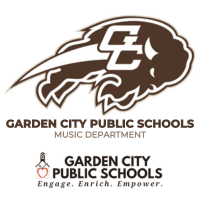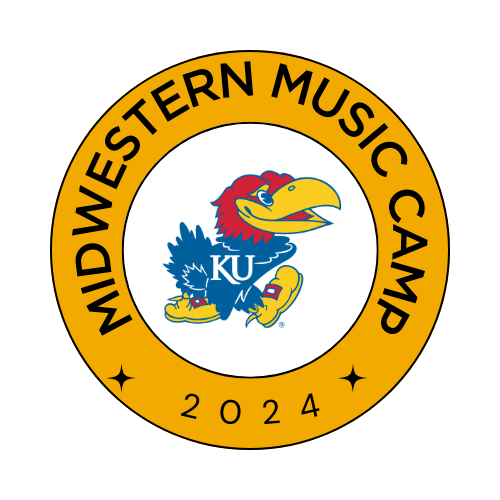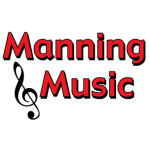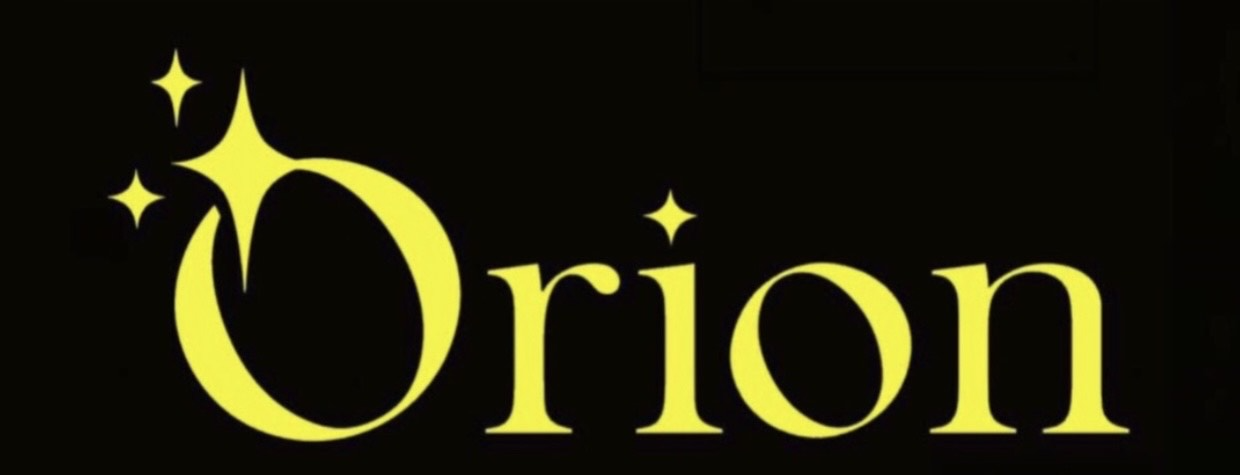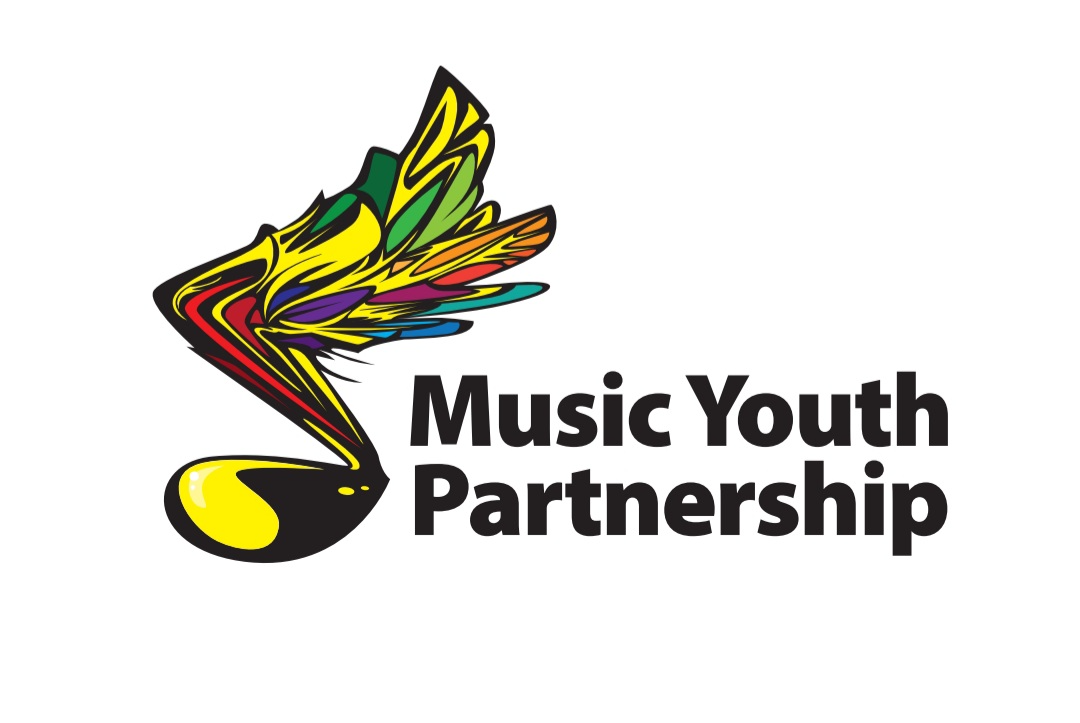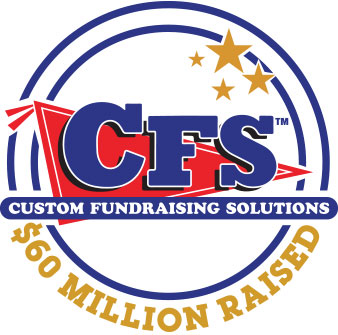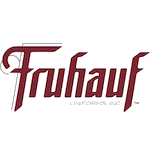
By Aileen Miracle
Reprinted with permission from Mrs. Miracle’s Music Room blog.
Are you wondering how you will teach while social distancing? Struggling with what types of activities you can include when you might not be able to sing at all? In this blog post, I’ve gathered ideas from several elementary music teachers, to give you lots of possibilities for socially distanced in-person learning. Please keep in mind that because each school district has different regulations, what works for one school may not work for another.
Thank you to these teachers for their wonderful ideas:
- Lisa Lohr from Maryland
- Tamara Andrews from North Carolina
- Jessica from Colorado
- Jackie Schoon from Michigan
- Megan Ferris from Vermont (check out her blog here)
- Christine Kelsey from Ilinois
- Megan Norem from Ohio
- Samantha DeBey from Colorado
- Cat Glaser from Texas
- Louise Watts from London
- Erica McMyler from New York
- Anna Davis from Iowa
- Evonne Cruz from Illinois
Here are some burning questions, with some answers!
How Can Students Make Music Without Singing?
The question I asked of music teachers was, “How do you plan to make music with students with no singing or limited singing (and if you potentially have to teach on a cart)?” Here is a bulleted list of answers.
- Rhythm
- Rhythm warm-ups
- Rhythm activities (reading, dictation, etc.)
- Modify songs to focus on speaking rhythmically
- Individual flashcards
- Body percussion
- Body percussion ostinato
- Students write an ostinato to perform to a known song
- Steady beat activities
- Making ostinati to recordings
- Guessing patterns
- Melody
- Body solfa warm-ups (listening to the recording)
- Making glass xylophones and pitching them to create certain notes.
- Listening lessons
- Composer blurbs
- Listening maps and activities, analysis
- Making flipbooks
- Units on orchestra and composers
- Some sort of project around students creating a “playlist” that represents their life. Or, more coloring pictures that go with a song.
- Movement and dance
- Movement in place (rotating around sides of the desk to show phrasing/sections)
- Lip syncing while moving to action songs, sign language songs, call and response type chanting games around the room.
- Individual body movement
- Nonlocomotor movement
- Instruments
- Tone bar instruments, tone chimes
- Drumming
- Bucket drumming
- Boomwhackers
- Homemade personal instrument kits
- Junkyard type drumming with personal items (pencils, crayon boxes, books, etc),
- Make instruments that go with a book (egg shakers, rain sticks, pencil rhythm sticks)
- Ukuleles
- Technology
- Flipgrid
- Hyperdocs (see this blog post for more information)
- Digital escape rooms
- Considering making videos singing a song & have students video themselves and return it via Seesaw
- Alternatives to singing
- Virtual Choirs (see more about virtual choirs here)
- Humming
- Loom videos of teacher singing
- Chants and rhymes
- Makaton signs, or sign language (read more about Makaton here)
- Listening to pre-recorded song stories
- Lip syncing unit with upper elementary as a “back-to-school” activity
- Miscellaneous
- Exploring timbre with personal desk items
- Elements of music
How Can Students Play Instruments Safely?
Here is a bulleted list of ideas, from logistics to making instrument bags!
- Logistics
- Hopefully, in my classroom, I can assign instruments by grade level so there is time to clean before another grade level uses them.
- Hopefully, I’ll have the time to disinfect after each usage.
- Disinfecting instruments, letting them sit, and using on different days with different classes.
- 1 instrument or set of mallets per child per day. Rotate through so each class will have a chance. Sanitize at the end of the day.
- I did read that putting coverings on the bells of instruments can reduce the spread of aerosols. I am going to look into that more once I know my school setup and procedures.
- I likely can divvy up all school-owned instruments among the grade levels. For example, the 2nd graders get tambourines and the 1st graders get rhythm sticks. To eliminate sharing, I’d assign an instrument to each kid. Maybe I can do a rotation quarterly, so over the course of the school year, they’d have experience with multiple instruments.
- Types of instruments
- Boomwhackers, bucket drumming, and ukuleles for older students
- We will use drum buckets, crash can sets, and heavy-duty water bottles
- Making/ purchasing instruments
- I plan on making dowels today for each individual kid for desk drumming or rhythm sticks.
- Debating on buying each student their own set of drum sticks if I have the money.
- Thinking about making a class set of ‘all in one’ instrument a mini water bottle with ridges to scrape that can also be tapped & fill with rice or some ‘soft’ sound. Attach an unsharpened pencil as a striker.
- Containers using sticks and recycled items.
- I’m making a music “packet” for my students. For instruments, I’m creating mallets by using dowel rods & rubber balls, pool noodle cut in half for sandpaper, one egg shaker
- Individual bags of “percussion instruments” (sticks, shakers, etc)
Here is a picture of a water bottle with rice. This could work really well for a homemade instrument, and you could even ask students to bring from home!
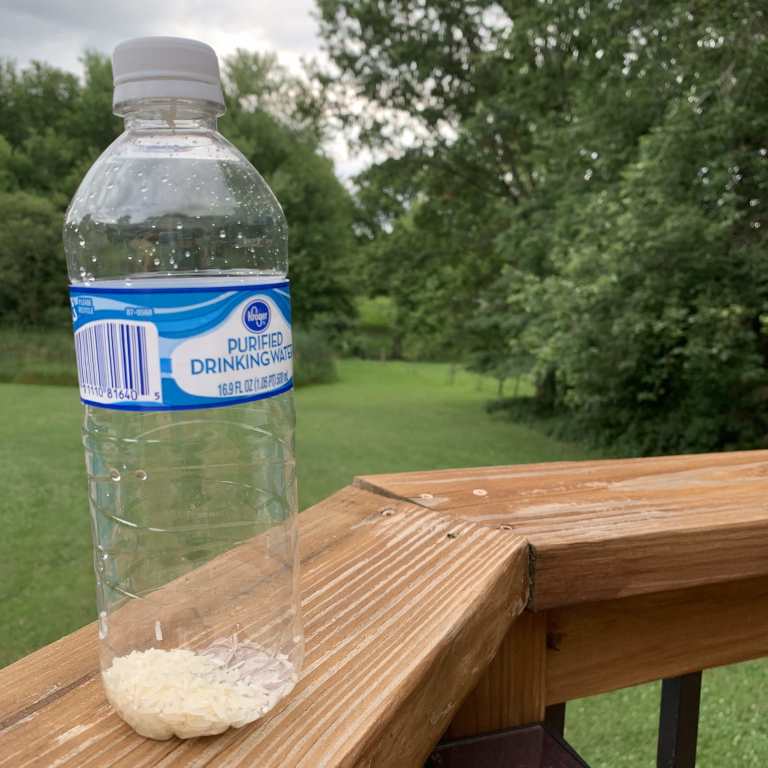
How Do You Plan To Set Up Your Room?
Here are some ideas for setting up your room for social distancing:
- Sit spots/ carpet markers
- Velcro lines
- Use the gym, when available
- Go outside, weather permitting
- Sit in plastic chairs, which can be sanitized after the end of each class
- Duck tape with hula hoops on carpet
How Do You Plan On Playing Games?
- Denise Gagne shared an excellent modification to any circle pass game: Teacher uses a flashlight to point to students as they would pass the beat- the out kid reads a rhythm then the game continues with nobody out (or could play an instrument if cleaning is set up)
- Social distant partners with air claps
- Maybe 4 corners with floor tape, spot dots, or velcro to show where they can pick to stop.
- More copy cat turn like games- chanting instead of singing
- Freeze dance in our spots
- Body percussion
- Music theory games like ‘secret pattern.’
- Guessing games
- Individual memory games
- Mystery rhythms and melodies
- Object hiding games, if using multiple objects that can be disinfected afterwards. (Each new turn, we’d hide a fresh, clean item…)
- Tech games
- Rhythmic and melodic games, similar to centers activities, where students have their own cards
- Maybe holding rhythm/lummi sticks for “hand games” so they aren’t touching and touch sticks instead?
- If outside: Page’s Train
- Bump Up Tomato-keep beat on own hands & then freeze
- Bim Bum-move to the best & freeze pose on every rest (kids love the challenge & the 3 rests at the end)
- Plainsies Clapsies (with students having own beanbag from their individual packet of materials)
- I Have, Who Has (like these)
- For more ideas, check out this post.
What Tech Resources Will You Use?
- Virtual Music Rooms
- Kahoot
- Quizizz
- Digital escape rooms (like this)
- Musicplay online
- Quaver
- Turn purchased worksheets into a digital worksheet to assign, adding drop & drag, etc.
- Youtube to feature cool lessons from other teachers (Move its, box drumming, etc.)
- Music Tech Teacher
- Flipgrid
- Flat.io
- Boom cards
- Interactive Google slides
- Google Chrome Music Lab
- Google Classroom
- Loom
- Google Docs
- Lesson boards
- Screencastify
- Edpuzzle
- Seesaw
- Ideas from Katie Wardrobe from Midnight Music
- iPads
- Plickers
- Gonoodle
- Acapella app
- Screencast & Videostar to show motions etc when at home (will also double as a great sub video
- Music for Kiddos Stephanie Leavell has simple ideas and songwriting challenges
One more tech note—Anna from Iowa suggests, “I want to use my in-person time wisely and teach students the technology I will use in an ‘outage.’ So, I will likely set up my classes to allow for that. I plan to teach an online lesson in person so that students can become comfortable and confident with it.”
Now What?
So now you might be wondering how to gather all of these great ideas and make decisions! The decisions you make of course will depend on what your district has told you. I love Trello, a free productivity website, for organizing ideas, so I made this Trello board to organize what I thought I’d do, with teaching while social distancing.
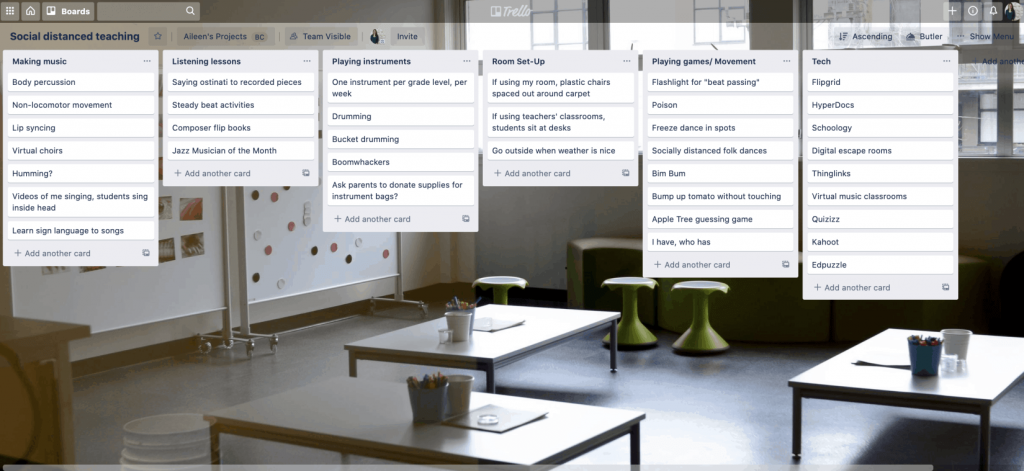
I’m thinking that if I am in-person teaching, and I still have 50 minutes with students, I will have half of the lesson be active music-making, like body percussion, ostinati with recorded pieces, learning sign language to a song, etc., and the other half of the lesson will be 1:1 Chromebooks, with students exploring on Thinglink, HyperDocs, Digital escape rooms, completing a PBL project, etc.
If you’re looking for materials you can use with your students when explaining what this school year will look like–whether it be in-person or distance– check out my slides set on Teacher Pay Teacher, which is editable and comes in both PowerPoint and Google Slides.
I hope this is helpful to you as you wrap your mind around what this year will look like. Thank you so much to my contributors!
Happy planning!






